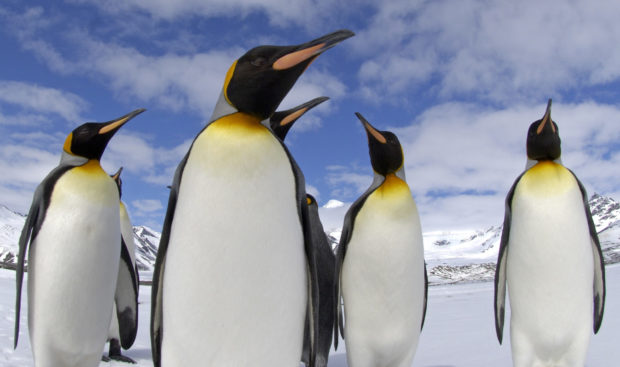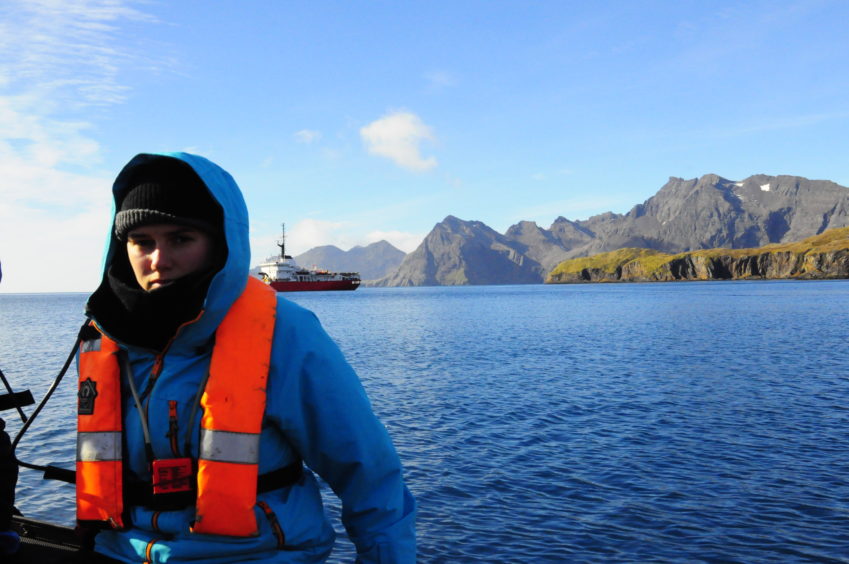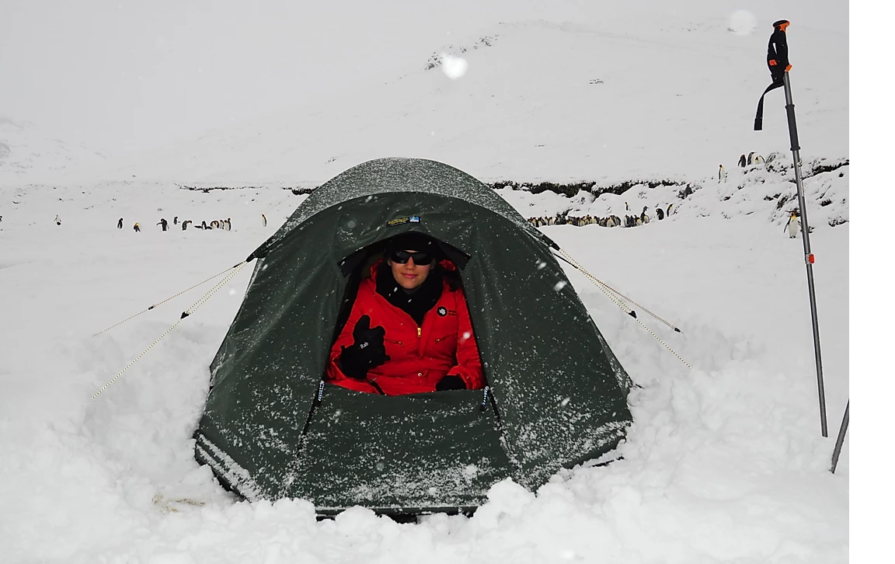
They are black and white royalty of the South Pole but, scientists have discovered, even King Penguins are not safe from the scourge of plastic polluting the world’s oceans.
A study in Antarctic has found that over three quarters of the penguins surveyed in South Georgia had microfibres in their stomachs.
Smaller than a baby’s fingernail, and often coated in toxic chemicals, they can lodge in a bird’s stomach, and as they break down into even smaller nanoparticles, wreak havoc throughout the body.
Until recently it was believed that the Antarctic, protected by the Circumpolar Current flowing eastward around the uninhabited continent, was a haven from the menace.
The island is home to one of the world’s largest colonies of King Penguins, with around 100,000 pairs, and was praised by Sir David Attenborough as one of the most extraordinary places on Earth.
Standing over three feet tall, the birds raise just one chick every two years, and have a striking patch of orange-gold feathers on their neck.
Lead researcher Camille Le Guen from St Andrews University, who spent over two months on the island, said: “The seas are suffering from climate change, and over-fishing . Plastic pollution is an added and growing threat.
“The Southern Ocean was supposed to be the cleanest ocean in the world – but maybe this is not such an isolated place after all.
“The Antarctic Circumpolar Current is like a semi-barrier for microfibres, but once they manage to get in, they are stuck because of that current and then they will accumulate.”
She added: “We found 77% of birds had microfibres in their diet, birds with chicks and even non-breeding birds.
“Whether they are natural, like cotton and wool, or synthetic, like polyester – microfibres from clothes accumulate chemicals – things like flame retardants and the dyes for the colour.
“If they are ingested in the stomach, they may degrade and end up inside the body, and then they cause problems.” Global plastic production has increased almost 70-fold over the last 60 years, from 0.5 million tonnes in 1960 to 348m tonnes in 2017.
And almost 300m tonnes of plastic debris are estimated to be floating at sea surface globally, with more deposited on the sea floor.
Microfibres are concentrated in surface waters and sediments but can also be concentrated in fish. The highest level of contamination was found among birds incubating their eggs.
According to Friends of the Earth, one washing load of clothes could be shedding up to 17 million tiny plastic fibres. Up to 64% of most new fabrics are made of plastics such as polyester, nylon and acrylic.
Lying 860 miles south-east of the Falkland Islands, South Georgia and the South Sandwich Islands is a UK Overseas Territory.
It is more than 120 miles long and up to 28 miles wide, rising to 9,700ft at Mount Paget.
During the international study, samples were collected last February and March in South Georgia from incubating, chick-rearing and non-breeding birds.
Altogether, 77% of the penguin guano samples collected contained microfibres.Of the fibres, 88% were made of natural materials such as cotton, and linen, with only 12% synthetic. And the concentration was twice as high in incubating birds.
Ms Le Guen warned: “We found in the Southern Ocean that there are more natural fibres than synthetics, more cotton and wool than polyester and nylon, for example. But that is likely to change in the future.
“In the past we used to produce natural clothes, but now we produce much more synthetic clothes than natural.If we come back in 50 years it it likely to be very different.”
Ms Le Guen added: “We never know what is going to happen next.
“The real concern now is nanoplastics, resulting from the degradation of the microplastic fibres, and this is more of a problem.
“It has been shown in different species that nanoplastic can get into the organs, the brain, the different tissues and alter their functioning.”
In the journal Environment International, the team of researchers wrote: “The long ‘residence time’ of plastic in marine ecosystems could harm marine life for many decades even in a scenario involving the immediate cessation of production and discarding of plastics.”
Dr Philip Trathan, head of conservation biology at British Antarctic Survey, said: Plastics are now pervasive in all the world’s ocean and undertaking research to identify where, and when, plastics enter the food chain is really important.
“We have been studying debris on beaches at South Georgia for 25 years or more, and they can be swept in on the ocean currents from South America and further afield.
“Technology can help mitigate some of the problem. For example, including filters on washing machines so that microfibres made from synthetic clothing do not enter the marine ecosystem.
“Other technological solutions will be important, but in the meantime, we should continue to monitor remote ecosystems so we can better understand the problem.
“Studies highlight the importance of monitoring in remote locations such as Antarctica.”
Polar problems: Screaming seals and too much p-p-p-poo
Camille Le Guen spent more than two months “sleeping in a fridge” to uncover the secrets of life with the Hound Bay colony’s King Penguins.
Temperatures dropped way below freezing every night, even inside the tent she shared with colleague Dr Richard Sherley, a marine ecologist.
And living cheek-to-cheek with thousands of penguins and a colony of elephant seals, the stench was overwhelming.
The 27-year-old French-born researcher said: “I am used to penguin poo now, especially as I did penguin poo analysis, collecting samples everyday.”
And the round-the-clock bird calls through the walls of their flimsy shelter meant they barely had an unbroken night’s sleep.
“It is really loud, even in the night. You have seals and penguins and they are all screaming.”
Camille was dropped off on South Georgia by a Russian icebreaker as part of an International Antarctic Circumnavigation Expedition.
“We had no heating, no phone, no toilet, no shower, and no electricity, as the generator failed.”
“I struggled most with the cold. In the night you are cold, in the day you are cold, It was like sleeping in a fridge.”
However, she added: ”It is the best place I have ever been. You have the sea, the mountains, the snow – it is so rich in wildlife.”

Enjoy the convenience of having The Sunday Post delivered as a digital ePaper straight to your smartphone, tablet or computer.
Subscribe for only £5.49 a month and enjoy all the benefits of the printed paper as a digital replica.
Subscribe © Richard Sherley
© Richard Sherley © Richard Sherley
© Richard Sherley